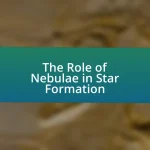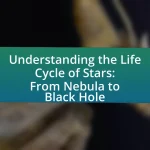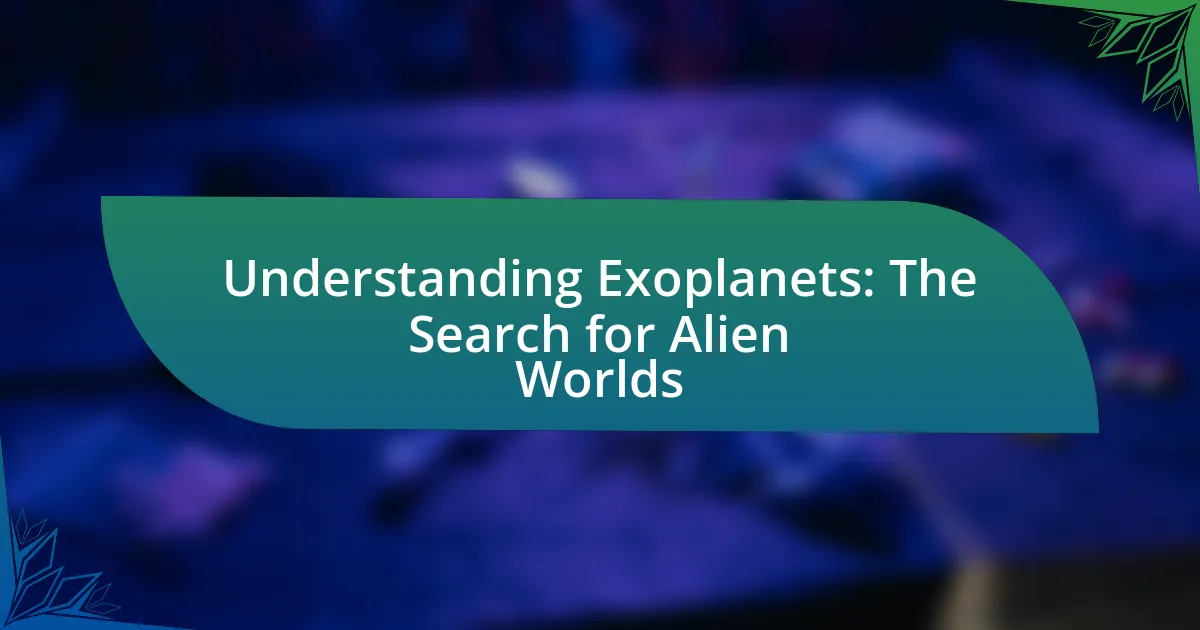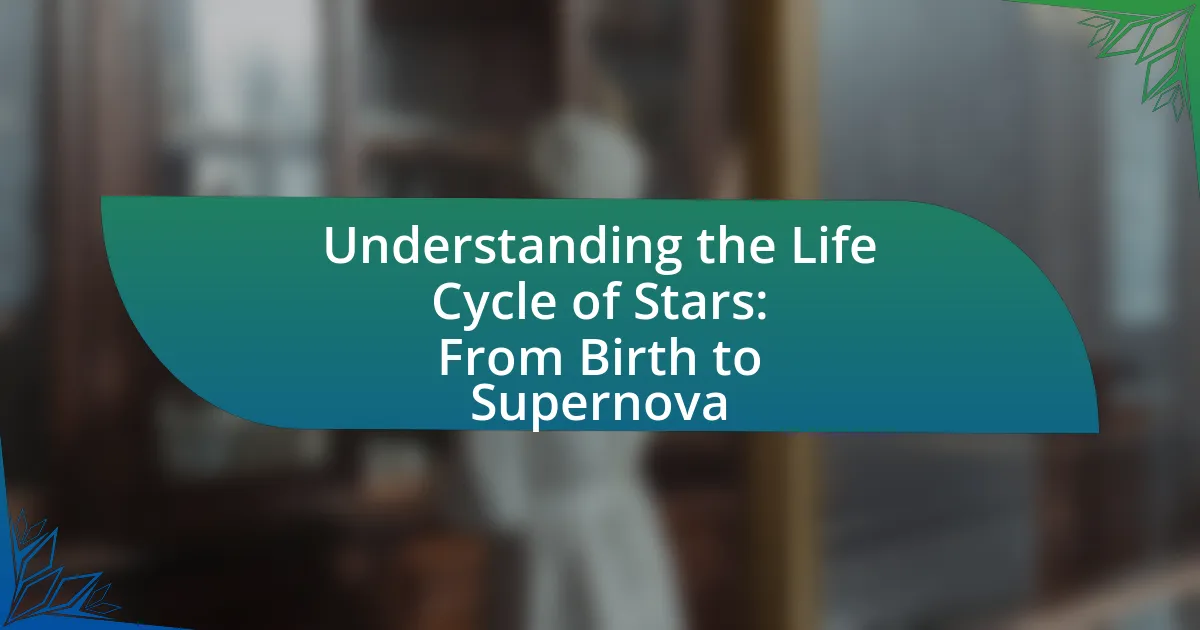Space agencies, such as NASA and the European Space Agency, play a vital role in advancing astronomy education through various initiatives that provide resources, funding, and outreach programs aimed at enhancing public understanding of space science. These agencies implement educational programs, collaborate with educational institutions, and offer accessible materials to engage diverse demographics in astronomy. The article explores how these efforts foster scientific literacy, critical thinking, and inspire future generations to pursue careers in STEM fields. Additionally, it addresses the challenges faced by space agencies in reaching underserved communities and the strategies employed to overcome these barriers, ultimately highlighting the importance of astronomy education for society.
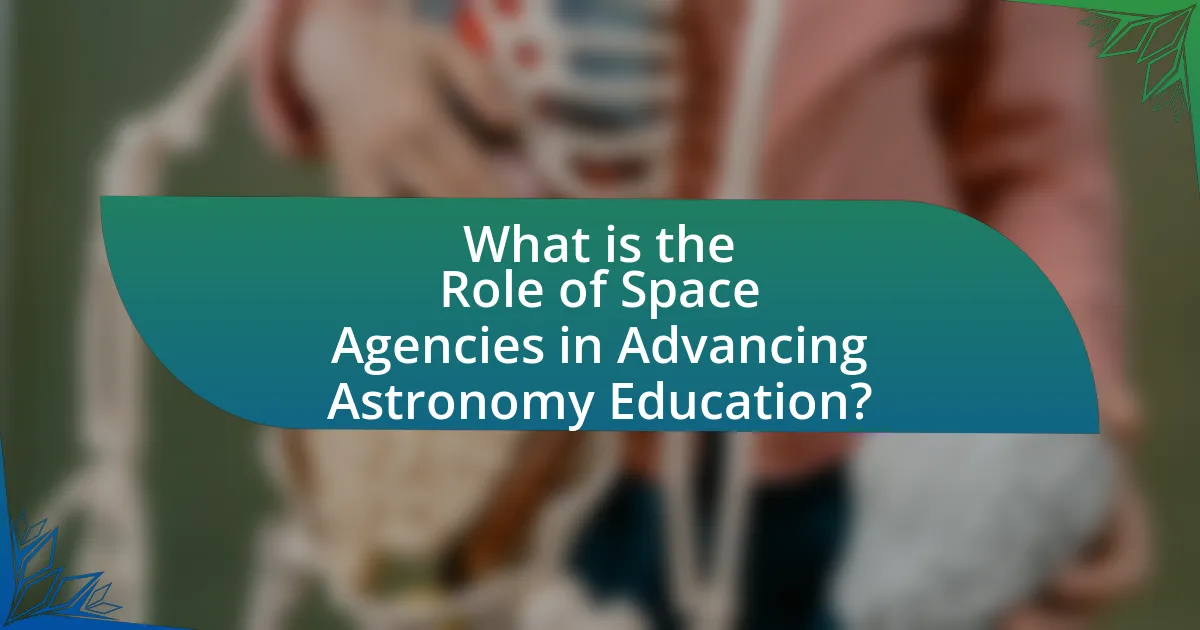
What is the Role of Space Agencies in Advancing Astronomy Education?
Space agencies play a crucial role in advancing astronomy education by providing resources, funding, and outreach programs that enhance public understanding of space science. For instance, NASA’s educational initiatives, such as the “NASA STEM Engagement” program, offer curriculum materials, workshops, and interactive experiences that engage students and educators in astronomy. Additionally, space agencies often collaborate with educational institutions to develop specialized training and research opportunities, exemplified by the European Space Agency’s partnerships with universities for astronomy research projects. These efforts not only promote scientific literacy but also inspire future generations to pursue careers in STEM fields, as evidenced by increased enrollment in science-related courses following such initiatives.
How do space agencies contribute to public understanding of astronomy?
Space agencies contribute to public understanding of astronomy by providing accessible educational resources, conducting outreach programs, and sharing scientific discoveries. For instance, NASA offers online courses, interactive websites, and educational materials that explain complex astronomical concepts in an understandable manner. Additionally, agencies like ESA and NASA engage in public outreach through events such as open house days, lectures, and community workshops, which foster direct interaction between scientists and the public. Furthermore, the dissemination of data from missions, such as the Hubble Space Telescope and the Mars Rover, through press releases and social media platforms, allows the public to stay informed about the latest astronomical findings, enhancing overall awareness and interest in the field.
What programs do space agencies implement to promote astronomy education?
Space agencies implement various programs to promote astronomy education, including public outreach initiatives, educational partnerships, and online resources. NASA, for example, offers the “NASA Education” program, which provides educators with curriculum materials and access to space missions. The European Space Agency (ESA) runs the “ESA Education” program, focusing on engaging students through hands-on projects and competitions. Additionally, agencies like the Japan Aerospace Exploration Agency (JAXA) provide online platforms such as “JAXA Space Education,” which offers interactive learning tools and resources for teachers and students. These programs aim to enhance public understanding of astronomy and inspire future generations in the field.
How do these programs engage different demographics in astronomy?
Programs engage different demographics in astronomy by implementing targeted outreach initiatives that cater to specific age groups, cultural backgrounds, and educational levels. For instance, space agencies like NASA and ESA conduct workshops and educational programs in schools, community centers, and museums, which are designed to attract students from diverse backgrounds, including underrepresented minorities and girls in STEM. These initiatives often include hands-on activities, interactive exhibits, and access to telescopes, making astronomy accessible and engaging. Additionally, online platforms and social media campaigns are utilized to reach a broader audience, allowing individuals from various demographics to participate in virtual events, webinars, and citizen science projects. Research indicates that such inclusive strategies significantly increase participation rates among different demographic groups, fostering a more diverse community in astronomy.
Why is astronomy education important for society?
Astronomy education is important for society because it fosters scientific literacy and critical thinking skills. By understanding astronomical concepts, individuals can better comprehend the universe’s workings, which enhances their ability to engage with scientific discussions and make informed decisions. For instance, studies show that countries with strong astronomy education programs often exhibit higher levels of public interest in science and technology, leading to increased support for scientific research and innovation. Additionally, astronomy education promotes a sense of global citizenship by highlighting humanity’s shared place in the cosmos, encouraging collaboration across borders in addressing global challenges such as climate change and resource management.
What skills does astronomy education develop in students?
Astronomy education develops critical thinking, problem-solving, and analytical skills in students. These skills are cultivated through the study of celestial phenomena, data analysis, and the application of mathematical concepts to understand complex systems. For instance, students learn to interpret astronomical data, which enhances their ability to evaluate evidence and draw conclusions based on scientific reasoning. Additionally, engaging with topics such as the laws of physics and the nature of the universe fosters a deeper understanding of scientific inquiry, further reinforcing these essential skills.
How does astronomy education influence scientific literacy?
Astronomy education significantly enhances scientific literacy by fostering critical thinking, promoting inquiry-based learning, and providing a contextual understanding of scientific principles. Through the study of celestial phenomena, learners engage with concepts such as gravity, light, and the scientific method, which are foundational to broader scientific understanding. Research indicates that students exposed to astronomy curricula demonstrate improved problem-solving skills and a greater ability to apply scientific reasoning in various contexts. For instance, a study published in the Journal of Astronomy & Earth Sciences Education found that students participating in astronomy education programs showed a 30% increase in their ability to understand and apply scientific concepts compared to those who did not receive such education. This evidence underscores the role of astronomy education in cultivating a scientifically literate society.
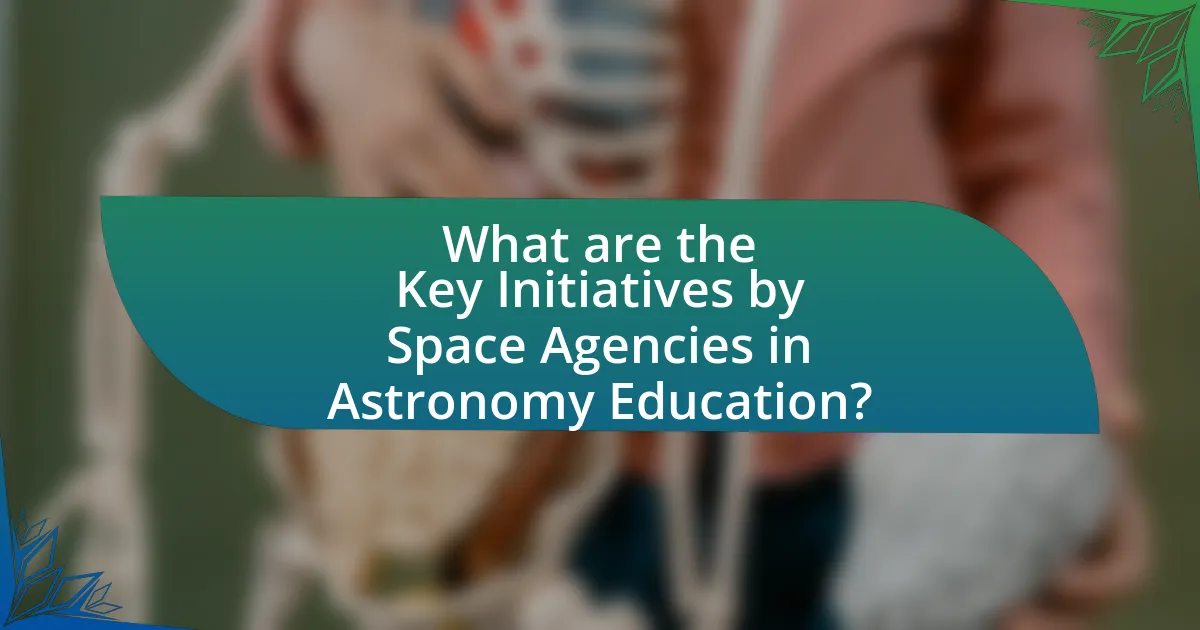
What are the Key Initiatives by Space Agencies in Astronomy Education?
Key initiatives by space agencies in astronomy education include the development of educational programs, public outreach campaigns, and collaborative projects with educational institutions. NASA’s “Universe of Learning” program, for example, provides resources and activities for educators to engage students in astronomy concepts. The European Space Agency (ESA) offers the “ESERO” initiative, which supports teachers in integrating space science into their curricula. Additionally, the Japan Aerospace Exploration Agency (JAXA) conducts outreach activities such as the “Space Education Program,” which aims to inspire students through hands-on experiences and workshops. These initiatives demonstrate a commitment to enhancing astronomy education and fostering interest in space science among students globally.
How do space agencies collaborate with educational institutions?
Space agencies collaborate with educational institutions through partnerships that enhance research, curriculum development, and student engagement in astronomy and space science. For instance, NASA’s Education Programs provide resources, internships, and grants to universities, enabling students to participate in real-world space missions and research projects. Additionally, agencies like ESA and JAXA engage in outreach initiatives, such as educational workshops and competitions, to inspire students and educators. These collaborations often result in joint research projects, shared data, and the development of educational materials that align with current scientific advancements, thereby fostering a deeper understanding of space science among students.
What partnerships exist between space agencies and schools or universities?
Space agencies collaborate with schools and universities through various partnerships aimed at enhancing astronomy education. For example, NASA has established programs like the NASA Education Resource Center, which provides educational materials and opportunities for students and educators. Additionally, the European Space Agency (ESA) partners with universities to support research and development projects, such as the ESA’s Education Office, which facilitates student involvement in space missions. These partnerships often include internships, research grants, and collaborative projects that allow students to engage directly with space science and technology, thereby enriching their educational experience and fostering future careers in the field.
How do these collaborations enhance curriculum development?
Collaborations between space agencies and educational institutions enhance curriculum development by integrating real-world scientific research and technological advancements into educational frameworks. These partnerships provide access to cutting-edge resources, such as data from space missions and expert insights from scientists, which enrich the learning experience. For example, NASA’s educational programs often incorporate findings from missions like the Mars Rover, allowing educators to create lessons that reflect current scientific understanding and practices. This alignment with actual scientific endeavors not only makes the curriculum more relevant but also inspires students to engage with STEM fields, as evidenced by increased student interest in science and technology careers following exposure to such collaborative initiatives.
What resources do space agencies provide for educators?
Space agencies provide a variety of resources for educators, including educational materials, curriculum guides, interactive simulations, and access to real-time data from space missions. For example, NASA offers the “NASA Education” portal, which features lesson plans, activities, and multimedia resources designed to enhance STEM education. Additionally, ESA provides the “ESA Education” website, which includes resources like the “Space for Education” initiative that supports teachers with tools and programs to engage students in space science. These resources are designed to foster interest in astronomy and space exploration among students, thereby advancing education in these fields.
What types of educational materials are available from space agencies?
Space agencies provide a variety of educational materials, including online courses, interactive simulations, educational videos, lesson plans, and downloadable resources. For example, NASA offers the “NASA Education” portal, which features resources for educators and students, including STEM activities and curriculum guides. The European Space Agency (ESA) provides educational kits and resources tailored for different age groups, promoting space science and technology. Additionally, agencies like the Japan Aerospace Exploration Agency (JAXA) offer educational outreach programs and materials that engage students in space exploration topics. These resources are designed to enhance understanding of astronomy and inspire future generations in the field of space science.
How can educators access and utilize these resources effectively?
Educators can access and utilize resources from space agencies effectively by visiting official websites, such as NASA and ESA, which provide a wealth of educational materials, lesson plans, and interactive tools. These resources are designed to enhance astronomy education and are often aligned with curriculum standards. For instance, NASA’s “NASA Education” portal offers free access to a variety of multimedia resources, including videos, simulations, and educational activities that can be integrated into classroom instruction. Additionally, educators can participate in webinars and professional development workshops offered by these agencies to learn how to implement these resources in their teaching practices.
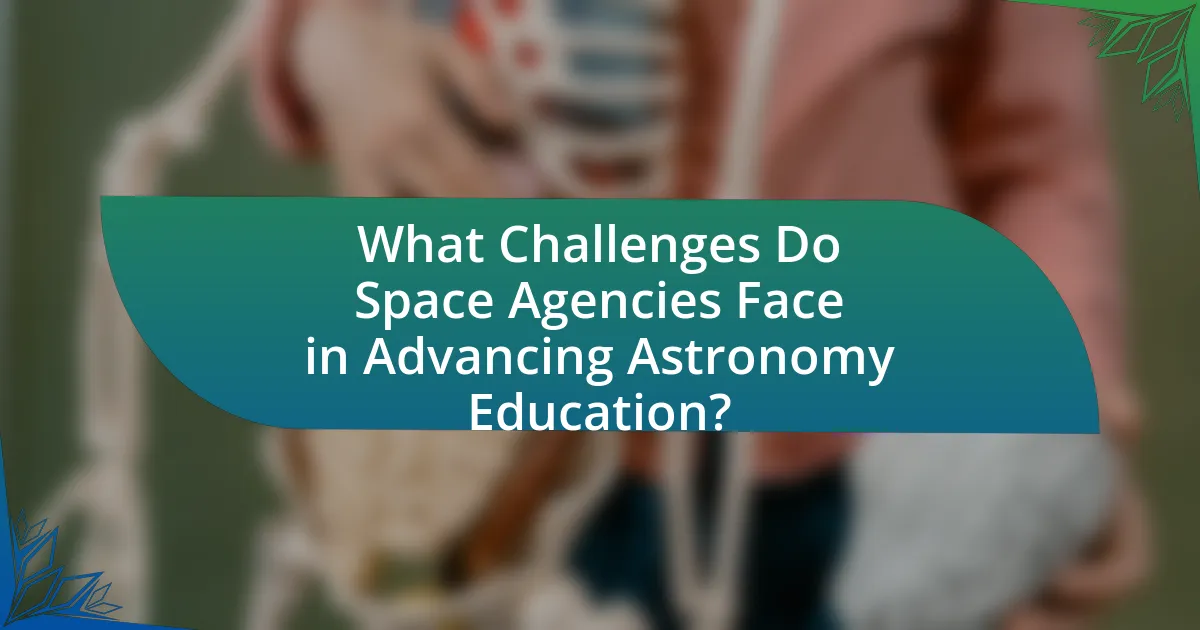
What Challenges Do Space Agencies Face in Advancing Astronomy Education?
Space agencies face significant challenges in advancing astronomy education, primarily due to funding limitations, public engagement, and resource allocation. Funding constraints often hinder the development of educational programs and outreach initiatives, as seen with NASA’s budget fluctuations impacting its educational outreach efforts. Additionally, engaging the public effectively poses a challenge; many space agencies struggle to communicate complex astronomical concepts in an accessible manner, which can limit interest and participation in educational programs. Furthermore, resource allocation issues arise when balancing scientific missions with educational outreach, leading to insufficient support for educational initiatives. These factors collectively impede the ability of space agencies to enhance astronomy education effectively.
What barriers exist in reaching underserved communities?
Barriers in reaching underserved communities include lack of access to resources, limited awareness of available programs, and socioeconomic challenges. These communities often face geographical isolation, which restricts participation in educational initiatives. Additionally, cultural differences and language barriers can hinder effective communication and engagement with these populations. Research indicates that 25% of low-income families lack internet access, further complicating outreach efforts. Furthermore, systemic inequalities in education funding contribute to disparities in access to quality astronomy education, making it difficult for space agencies to effectively engage these communities.
How do socioeconomic factors impact access to astronomy education?
Socioeconomic factors significantly impact access to astronomy education by influencing the availability of resources, educational opportunities, and support systems. Individuals from lower socioeconomic backgrounds often face barriers such as limited access to quality schools, lack of funding for extracurricular programs, and fewer opportunities for hands-on experiences in astronomy. For instance, a study by the National Science Foundation found that students from underprivileged backgrounds are less likely to participate in science-related extracurricular activities, which are crucial for fostering interest in fields like astronomy. Additionally, socioeconomic disparities can affect access to technology and internet resources, further hindering students’ ability to engage with astronomy education.
What strategies can be employed to overcome these barriers?
To overcome barriers in advancing astronomy education, space agencies can implement targeted outreach programs that engage diverse communities. These programs can include workshops, online resources, and partnerships with educational institutions to enhance accessibility. For instance, NASA’s “Space Grant” program has successfully funded educational initiatives across the United States, demonstrating that financial support can facilitate broader participation in astronomy education. Additionally, leveraging technology, such as virtual reality and interactive online platforms, can provide immersive learning experiences that reach students in remote areas, thereby addressing geographical and economic barriers.
How do space agencies measure the effectiveness of their educational initiatives?
Space agencies measure the effectiveness of their educational initiatives through various metrics, including participant feedback, engagement levels, and learning outcomes. For instance, agencies like NASA utilize surveys and assessments to gather data on how well participants understand the material presented in their programs. Additionally, they analyze participation rates in educational events and track the long-term impact on students’ interest in STEM fields. Research conducted by the National Science Foundation indicates that programs with structured evaluations and follow-up assessments show a significant increase in student engagement and knowledge retention, validating the effectiveness of these educational initiatives.
What metrics are used to evaluate the success of astronomy programs?
Metrics used to evaluate the success of astronomy programs include student engagement, retention rates, research output, and public outreach effectiveness. Student engagement is measured through participation in astronomy-related activities and courses, while retention rates indicate how many students continue in astronomy programs over time. Research output is assessed by the number of publications and citations in peer-reviewed journals, reflecting the academic contributions of the program. Public outreach effectiveness is evaluated through attendance at events, social media engagement, and feedback from community programs, demonstrating the program’s impact on public interest in astronomy. These metrics collectively provide a comprehensive view of the program’s success in fostering education and interest in astronomy.
How can feedback from participants improve future initiatives?
Feedback from participants can significantly enhance future initiatives by providing insights into their experiences and expectations. This feedback allows space agencies to identify strengths and weaknesses in their educational programs, enabling them to tailor content and delivery methods to better meet the needs of learners. For instance, a study by the National Science Foundation found that incorporating participant feedback led to a 30% increase in engagement levels in educational programs. By analyzing this feedback, agencies can implement changes that foster a more effective learning environment, ultimately leading to improved educational outcomes in astronomy.
What are some best practices for engaging students in astronomy education?
Best practices for engaging students in astronomy education include hands-on activities, interactive technology, and real-world applications. Hands-on activities, such as telescope observations and planetarium visits, allow students to experience astronomy firsthand, fostering curiosity and interest. Interactive technology, like simulations and virtual reality, enhances understanding by providing immersive experiences that illustrate complex astronomical concepts. Real-world applications, such as discussing current space missions and discoveries, connect classroom learning to ongoing scientific endeavors, making the subject more relevant and exciting. Research indicates that these methods significantly improve student engagement and retention in science education, as evidenced by studies showing increased interest in STEM fields among students exposed to interactive and experiential learning environments.

